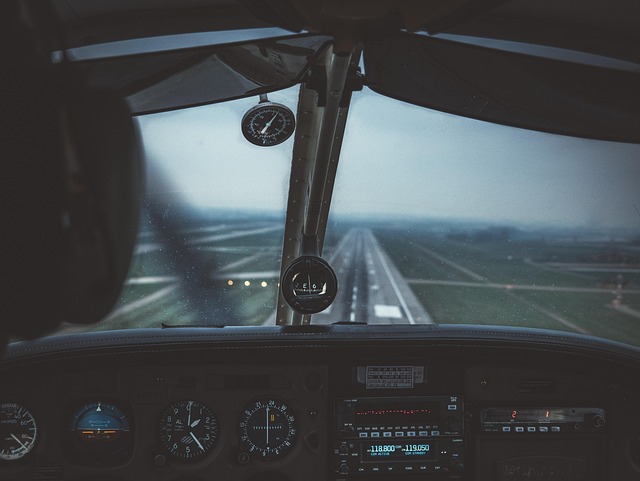Comprehensive Guide to Aviation Trainings in the USA: Explore Certifications, Flight Schools, and Career Paths
The world of aviation training in the United States offers a diverse range of opportunities for aspiring pilots and aviation professionals. From obtaining essential certifications to choosing the right flight school and mapping out a successful career path, this comprehensive guide will navigate you through the exciting realm of aviation education in the USA. Whether you're a novice dreaming of taking to the skies or an experienced pilot looking to advance your career, understanding the landscape of aviation training is crucial for achieving your goals in this dynamic industry.

What are the key aviation certifications available in the USA?
Aviation certifications in the United States are regulated by the Federal Aviation Administration (FAA) and form the backbone of a pilot’s career progression. The most common certifications include:
-
Private Pilot License (PPL): This is the starting point for most aspiring pilots, allowing you to fly single-engine aircraft for personal use.
-
Commercial Pilot License (CPL): This certification enables you to fly for compensation or hire.
-
Airline Transport Pilot License (ATPL): The highest level of aircraft pilot certificate, required to act as a pilot-in-command of scheduled air carrier operations.
-
Instrument Rating: This add-on qualification allows pilots to fly under Instrument Flight Rules (IFR).
-
Multi-Engine Rating: This certification permits pilots to operate aircraft with more than one engine.
-
Certified Flight Instructor (CFI): This allows pilots to teach others and is often a stepping stone in building flight hours.
Each certification has specific requirements for flight hours, ground training, and practical tests, known as checkrides.
How can you research and compare flight schools effectively?
When researching flight schools in the USA, consider the following factors:
-
Accreditation: Ensure the school is FAA-approved and check if it’s accredited by aviation organizations like AABI (Aviation Accreditation Board International).
-
Training Fleet: Evaluate the quality and variety of aircraft available for training.
-
Instructor Quality: Look into the experience and qualifications of the instructors.
-
Location: Consider weather patterns and airspace complexity, as these factors can affect training efficiency.
-
Cost: Compare tuition fees, aircraft rental rates, and additional expenses.
-
Career Support: Investigate job placement rates and industry connections.
-
Safety Record: Research the school’s safety history and protocols.
-
Student Reviews: Seek out testimonials from current and former students.
Create a spreadsheet to compare these factors across different schools. Visit potential schools if possible, and don’t hesitate to ask for a trial flight lesson to get a feel for their training approach.
What career paths are available for pilots in the USA?
The aviation industry offers diverse career paths for pilots beyond commercial airlines:
-
Commercial Airlines: Flying passengers or cargo for major, regional, or low-cost carriers.
-
Corporate Aviation: Operating private jets for businesses or high-net-worth individuals.
-
Cargo Operations: Flying for dedicated cargo carriers like FedEx or UPS.
-
Flight Instruction: Teaching new pilots and helping experienced pilots maintain proficiency.
-
Military Aviation: Serving in branches like the Air Force, Navy, or Army.
-
Aerial Firefighting: Operating aircraft to combat wildfires.
-
Medical Transport: Flying air ambulances or organ transport flights.
-
Law Enforcement: Operating police helicopters or fixed-wing aircraft.
-
Agricultural Aviation: Conducting crop dusting and other agricultural flight operations.
-
Test Pilot: Evaluating new aircraft designs and modifications.
Each path has unique requirements, challenges, and rewards. Research thoroughly and consider internships or job shadowing to gain insights into different aviation careers.
What are the essential safety protocols in flight training?
Safety is paramount in aviation training. Key safety protocols include:
-
Pre-flight Inspections: Thorough checks of aircraft systems before each flight.
-
Weather Briefings: Comprehensive analysis of weather conditions before flying.
-
Emergency Procedures Training: Regular practice of emergency scenarios.
-
Crew Resource Management (CRM): Training in effective communication and decision-making.
-
Fatigue Management: Understanding and mitigating the effects of fatigue on pilot performance.
-
Maintenance Compliance: Adhering to strict aircraft maintenance schedules.
-
Sterile Cockpit Procedures: Minimizing distractions during critical phases of flight.
-
Risk Assessment: Systematic evaluation of potential hazards before each flight.
Flight schools should emphasize these protocols throughout training, fostering a culture of safety that pilots will carry throughout their careers.
What key skills are developed through aviation training?
Aviation training develops a unique set of skills that are valuable both in the cockpit and beyond:
-
Decision-making: Pilots learn to make quick, informed decisions under pressure.
-
Spatial Awareness: Training enhances the ability to visualize and navigate in three-dimensional space.
-
Multi-tasking: Pilots develop the capacity to manage multiple tasks simultaneously.
-
Communication: Clear and concise communication is essential in aviation.
-
Time Management: Efficient planning and execution of flight operations are crucial.
-
Attention to Detail: Precision and thoroughness are paramount in all aspects of flying.
-
Stress Management: Pilots learn to perform effectively in high-stress situations.
-
Technical Proficiency: Understanding complex systems and procedures is a core part of training.
-
Teamwork: Effective collaboration with crew members, air traffic control, and ground personnel is vital.
-
Adaptability: The ability to adjust to changing conditions and new technologies is essential in the ever-evolving aviation industry.
These skills not only make for safe and competent pilots but also translate well to many other professional fields.
What are the typical costs associated with aviation training in the USA?
Aviation training can be a significant investment. Here’s an overview of typical costs:
| Training Component | Estimated Cost Range |
|---|---|
| Private Pilot License (PPL) | $10,000 - $15,000 |
| Instrument Rating | $8,000 - $12,000 |
| Commercial Pilot License (CPL) | $25,000 - $35,000 |
| Multi-Engine Rating | $4,000 - $6,000 |
| Certified Flight Instructor (CFI) | $5,000 - $8,000 |
| Airline Transport Pilot License (ATPL) | $5,000 - $10,000 (excluding required flight hours) |
Prices, rates, or cost estimates mentioned in this article are based on the latest available information but may change over time. Independent research is advised before making financial decisions.
These costs can vary significantly depending on factors such as location, type of aircraft used, and individual progress. Additional expenses may include study materials, medical examinations, and equipment. Many aspiring pilots finance their training through loans, scholarships, or by working in aviation-related jobs while training. Some airlines offer cadet programs that can help offset training costs in exchange for a commitment to work for the airline upon completion.
In conclusion, aviation training in the USA offers a structured path to a rewarding career in the skies. From obtaining essential certifications to developing crucial skills, the journey requires dedication, investment, and a passion for flight. By thoroughly researching flight schools, understanding career options, and committing to safety and continuous learning, aspiring aviators can navigate their way to success in this dynamic and exciting field.




